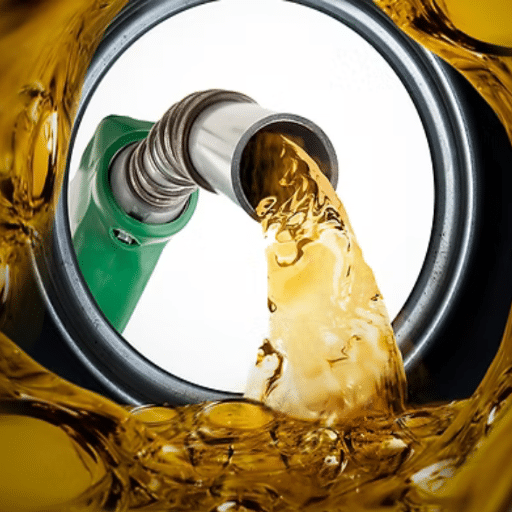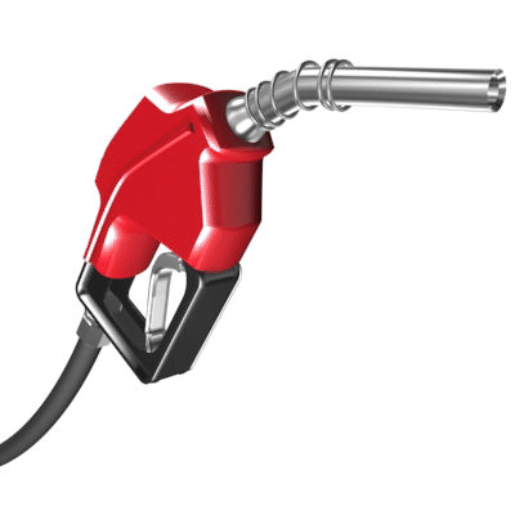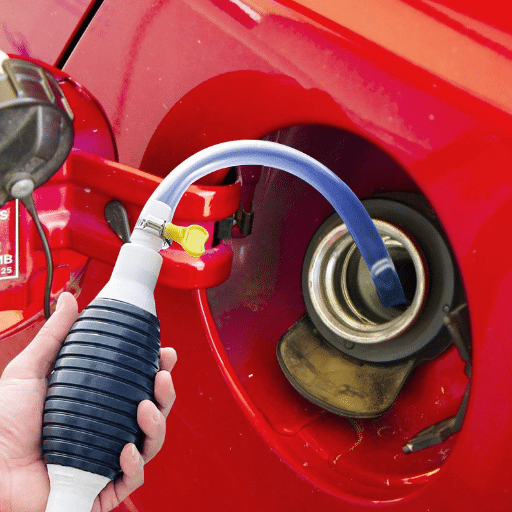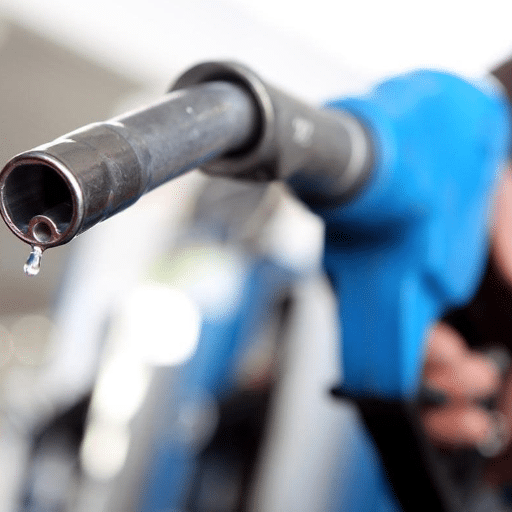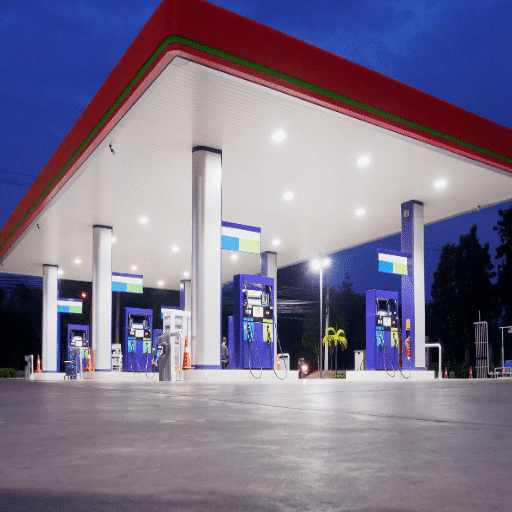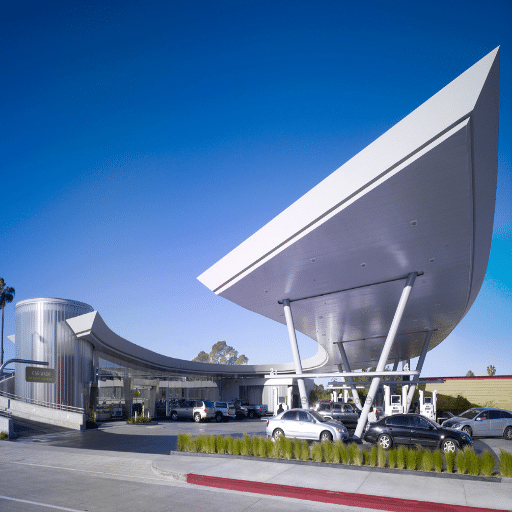Gas stations are an integral part of everyday life, providing fuel and convenience to millions each day. But have you then pondered about the profit a gas station actually makes? At least from the customer’s view, they might seem like they are soaking up money through a constant parade of buyers, but the real situation is much more complicated. This blog post will flesh out profits for gas stations in detail by breaking down where revenues come from and then highlighting the problems they face to stay profitable. From how fluctuating fuel prices mount up against costs to the importance of ancillary sources of income, we’ll delve into those elements that bring their actual profits in. By the time you’re done reading, it will be clear to you just how gas stations balance their low margins with a diverse revenue portfolio that keeps their businesses afloat.
Understanding Gas Station Profit Margins
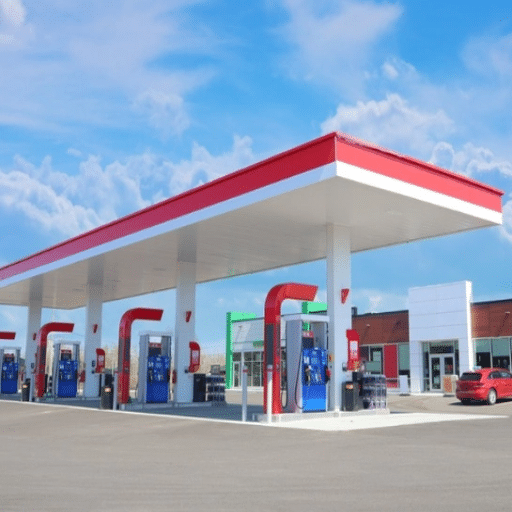
Gas stations are working on notoriously thin profit margins. The great bulk of their revenue from the sale of fuel goes to wholesale fuel costs, taxes, and transportation expenses, leaving a tiny slice for profit, usually an average of 1% to 3% back on each gallon sold. To make up for this, they sell a lot in their ancillary lines of trade: convenience store sales, car wash activities, repair work, and so on; all carry higher profit margins than fuel itself. Good cost control and a diversity of services are agents to be reckoned with for a gas station struggling with unpredictable fuel prices and a burdensome cost setup.
Average Profit Margin for Gas Stations
There are so many factors that must be considered while calculating profit margins at gasoline stations, such as fluctuating fuel prices or operational costs in different market conditions. On average, after the oil refiner’s and distributors’ share is taken into account, a service station makes a gross margin of about 10 to 15 cents per gallon on fuel sales. However, the net profit margin is pretty low when compared to the high operational expenses like wages, repairs, rents, and fees for credit card transactions. Credit card fees themselves can eat away 2 to 3 cents per gallon.
Additionally, profitability is heavily influenced by geography. Stations in urban centers or on high-traffic routes may witness a high volume of fuel sales, whereas in rural towns, operational expenses might be lower, thereby compensating for the lesser number of sales. An increase in non-fuel income is also significant, and convenience store sales strike an average profit margin of 30% or more on individual items. Rates for car washes and repair services can exceed 50%, thereby emphasizing the importance of diversification of services.
While margins on fuel are slim, better profits from other income streams keep many a gas station in a profitable and stable state within the retail market. Optimizing efficiencies and strategically reviewing pricing are the best methods to secure the highest profit margins in this competitive arena.
Factors Influencing Profit Margins
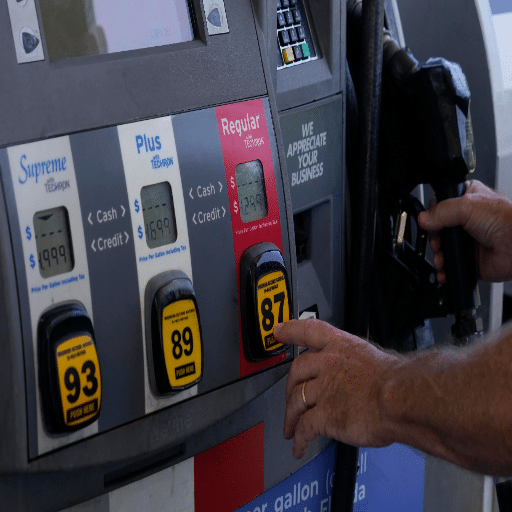
Location and Demographics
Different geographical scenarios lead to different profit margins in a gas station. Being in an urban high-density population area or close to a highway location brings in huge traffic and high sales, thus increasing revenue. On the other hand, knowing the demographics of the surrounding populace-a.k.a-gender, age groups, income levels, and preferences-help one offer services catering to what the consumers want, hence increased profit.
Cost of Goods Sold (COGS)
Fuel procurement cost, energy costs, and inventory procurement have a bearing on the margins. Increasing crude oil prices, coupled with supply-chain disruptions, increase the COGS and result in the squeezing of profits. Selection of vendors carefully and negotiation with them with an eye on stabilization of cost and hence margin is of utmost importance.
Non-Fuel Revenues:
The services that complement the core service, in the form of car washes, convenience stores, and repairs, can bring in far superior profitability. Said ancillary services often enjoy high margins that offset the rather thin margins on fuel sales. Typically, gas stations would invest in quality control and process enhancement in addition to marketing for non-fuel services for the best performance.
Operational Efficiency
Cost savings and margin improvements derive from streamlining operational procedures in all aspects of operations, including inventory management, employee training, energy use, etc. Point of sale and data analytics technologies provide real-time monitoring of trends in sales and inventory levels that yield an efficiency gain.
Pricing Strategies for Competitiveness
The very nature of the product makes pricing highly sensitive to competition-the strategic pricing matrix sets its own stage. Stations ensure competitive pricing and, most of the time, reward customer loyalty through loyalty programs or selling together with a non-fuel offering so as to give more reasons for customers to retain them and attract greater dollars per visit.
The better these factors are addressed, the better the upside will be for the business of an operator and the competition in the retail market.
Comparison of Profit Margins Across Different States
Profit margins of gas stations differ hugely from state to state because of the variances in taxation, operating costs, and regional demand dynamics. For example, in California and Illinois, profit margins per gallon generally run low by virtue of a high gasoline tax and constraints imposed by strict environmental laws. To name a few, California imposes among the highest gasoline excise taxes in the country, presently standing at approximately $0.68 per gallon, which, in turn, affects the profit margin of operators in the state.
TXHIL: On the other hand, Texas and Missouri tend to maintain slightly higher profit margins per gallon, under the stimulus of lower state fuel taxes (Texas commands an average tax of $0.20 per gallon) that supposedly allow operators greater pricing latitude without losing competitiveness. Furthermore, expenses to operate—property tax, wages, and utilities—tend to be lower in juxtaposition to those with higher economic inputs.
Another critical factor influencing profit margins includes regional fuel supply chains and refinery accessibility. For example, states with proximity to major refining hubs or pipelines benefit from reduced transportation costs, thus improving margins for gas station owners. Notably, states on the Gulf Coast, such as Louisiana, exhibit such advantages due to their close links with domestic refining infrastructure.
| State | Gasoline Tax (per gallon) | Profit Margin | Key Factors |
|---|---|---|---|
| California | ~$0.68 | Lower | High taxes, strict environmental laws |
| Illinois | High | Lower | High taxes, regulatory constraints |
| Texas | ~$0.20 | Higher | Lower taxes, reduced operating costs |
| Missouri | Lower | Higher | Greater pricing latitude, competitive advantages |
| Louisiana (Gulf Coast) | Moderate | Favorable | Proximity to refineries, lower transportation costs |
As a result, state-by-state analysis of profit margins exposes the multifaceted nature of this industry, which heavily depends upon fiscal policies, geographic advantages, and other regional market conditions. The majority of operators who grasp these nuances can tailor strategies appropriately for maximizing profitability in a competitive environment.
Revenue Streams Beyond Fuel Sales
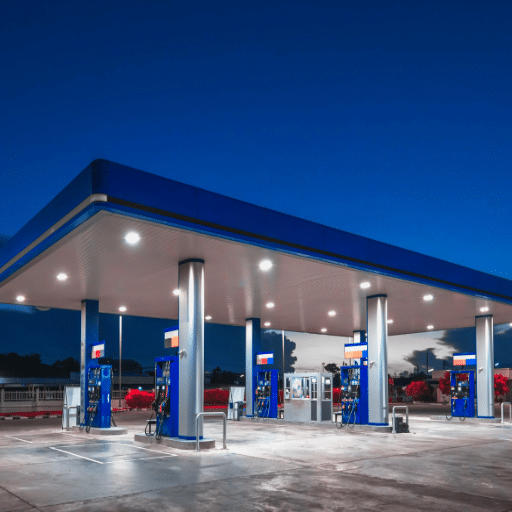
Revenue diversification increasingly becomes crucial as gas stations look for ways to circumvent the narrow margins at fuel sales. Income generation from convenience stores is the largest single source, accounting for about 30% profit margins or above. Snacks, fountain drinks, prepared food items, and household goods fall into this category. These small-margin sales, taken together, can easily outcompete fuel sales in total profitability. For example, a fountain drink costing a few cents to produce sells for several dollars, giving the business margins that are unthinkable for fuel.
Car washes form another important channel of income for gas station operations. Car washes produce profit margins upwards of 60 to 70%, and automated systems cut back on labor dependence to drive up operational efficiency with consistent service delivery. Premium wash packages also add more value and increased revenue per customer.
Repair services, automotive parts, and tires also help a lot in making money. These services are where the higher-margin selling exists and build customer relationships and loyalty. Another interesting source of revenue would be tie-ups with third-party vendors such as ATMs, lottery terminals, and vending machines with complementary services that call for minimal investment but create steady revenues.
Restaurants and franchises are now more common in gas stations. In the form of quick service restaurants or branded coffee outlets, these give reasons to customers to spend quality time and generate transaction sizes larger than ever before. By drawing on traffic from a range of sources, gas stations can get themselves insulated against fluctuating fuel prices and create a more robust, profitable business model.
Analyzing Gas Prices and Their Effects on Profit
Variability in fuel prices directly and deeply affects gas stations when it comes to profit. Gasoline is a product impacted by various factors such as the price of crude oil, the capacity of refineries, disruptions in the supply chain, government regulations, and changes in consumer demand. Very recently, for example, prices have been on the upward trend, with crude oil selling at between $90 and $95 per barrel in the international markets. Furthermore, any unfavorable geopolitical developments within any of the oil-producing zones helter-skelter the prices, making it difficult to stabilize the profit margins.
With higher gas prices, gas stations find that profit margins are shrinking as operators normally hesitate to charge the full cost to the consumer for fear of losing a competitive edge. Gross margins for the retail of gasoline usually vary from about 10 to 15 cents per gallon, depending on the area. Yet, there are external factors like higher transportation costs, fuel taxes in the different states, which range from around $0.15 to over $0.60 per gallon across the US, and also charges for credit card processing fees, which reduce the net profit further.
Rising gas prices can sometimes work in favor of some other sources of revenue. When customers are shelling out more for fuel, they are naturally looking to save on other fronts-basically, they are utilizing loyalty programs that many gas stations advertise. These programs run great customer retention campaigns and help customers return for more in-store purchases, which usually carry a higher price margin than fuel sales.
Upgrading fuel pricing methods and supply chain management, and leveraging secondary revenue streams must be emphasized to maintain profitability under fluctuating gas price conditions. An efficient inventory management system governing convenience store goods, coupled with sound knowledge of supply contracts and consumer behavior, will provide gas stations with the buffer to better manage price swings. The implementation of these operational controls can assist gas stations in reducing profit volatility and maintaining a competitive advantage in the marketplace.
Hidden Costs and Expenses Affecting Profitability
Gas stations face a variety of hidden costs and expenses that could threaten profitability. One of those factors is credit card transaction fees that might be anywhere between 1.5% and 3.5%, depending on each transaction. Being establishments with quick customer turnaround, mostly for small sales, these fees accumulate quickly, nibbling away at profitability margins. Then there are operating costs when it comes to equipment maintenance and repair; this includes everything from fuel pumps to ensuring underground storage tanks meet environmental safety standards. For example, federal laws require regular inspections and upgrades to storage tanks to prevent leakage, which can cost a business upward of tens of thousands of dollars.
Another significant expense is the volatility of prices in wholesale fuel. Fuel sales through gas stations generally have razor-thin profit margins, which constitute just a few pennies per gallon. Any price surge resulting from an interruption in the supply chain, fluctuating cost of crude oil, or geopolitical instability can force stations to bear testingly extra costs that cannot easily be measured by the consumer. There are also other administration perks aside from insurance premiums for liability coverage that add to the disadvantage, especially for stations located in high-risk areas prone to accidents or environmental litigation.
Labor expenses-“wages and benefits to employees”-also drain resources. With growing minimum compensation requirements, managers must juggle cost aspects with adequate levels of staffing to maintain service standards. Bottom line from theft: external theft, such as fuel drive-offs-and internal conduct by unscrupulous employees-constitute another front of financial challenge. Estimated losses due to drive-offs alone run into billions of dollars worldwide in the retail fuel industry.
Hidden expenses such as these would require a thorough planning of cash flows and operational efficiency if they were to be addressed profitably. Some successful owners of gas stations declare cutting costs in ways like installing state-of-the-art cash register systems to avoid theft, using predictive analytics to improve inventory turnover, and demanding better prices from suppliers to reduce input costs. If managed correctly and technological avenues are sought out, businesses can keep these hidden costs at bay.
Challenges and Opportunities in the Gas Station Business
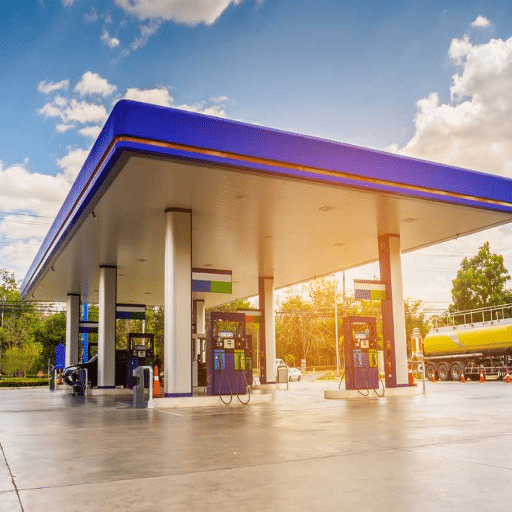
Challenges to the Gas Station Business
One of the primary challenges faced by gas station operators is market volatility, particularly in the pricing of fuel, which is influenced by global oil markets, geopolitical events, and regional competition. Over time, the promotion of EVs also acts as a long-term threat to conventional fuel sales. Other operational costs and compliance requirements can pose an impediment, too, such as environmental and safety standard regulations. Lastly, there is a growing number of labor and wage demands, further players in challenging operations.
Opportunities in the Gas Station Business
There are opportunities accompanying these challenges. Helping businesses diversify income streams by, for example, investing in convenience store operations or installing EV chargers could prepare them for certain trends. Using automation for inventory control and loyalty programs may result in increased efficiency and customer retention. Thus, partnerships with foodservice brands or e-commerce hubs may increase foot traffic and profitability. By embracing these capabilities, gas station operators may realize sustainable growth opportunities in a market that is going through changes.
Market Trends Impacting Profitability
Several notable key trends in the market are reshaping profitability for gas station operators. First and foremost is the rise of electric vehicles, which constitutes both a hurdle and an opportunity. Rising demand for traditional fuel can bring down revenue streams, while the newer option of placing an electric charging station initiates another set of customers, keeping operations futureproof. Second, the continued extension of convenience store-like features into the gas station is becoming a crucial factor. Customers walk in to buy good food, drinks, and some essentials, creating a secondary source of income while helping retention. Third, all the while, the changes seem to deepen with respect to digital transformation. Hence, great customer experiences, quicker transactions through mobile payments, and building long-term loyalty via personal loyalty programs will help margins in a highly competitive market. Should they reactively address these trends, gas station operators may only be averting the risk but capitalizing on the opportunity.
Strategies for Increasing Revenue
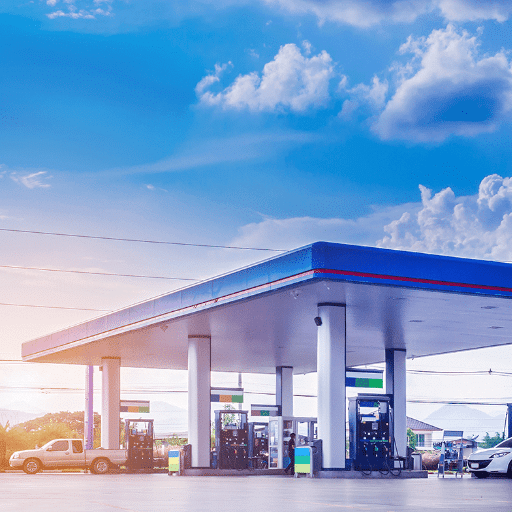
Sales could be boosted by honing in on such strategies as streamlining operations and enhancing customer service through technology. For instance, upgrading to a state-of-the-art POS system and mobile payments would promote transaction efficiency. Then, there could be targeted marketing campaigns based on data analytics regarding consumer behavior to promote relevant offers. More products may be offered for sale: convenience items that could either promote impulse buying or quick clean sales, and premium fuel to increase margins. Then, invest in a worthwhile loyalty program that rewards regular customers and keeps them engaged for a long time, which is another key element for businesses to stay competitive.
The Future of Gas Stations in a Changing Market
The future of gas stations must focus on the energy transition, changing consumer behavior, and technology. The actual electric vehicle (EV) shift need of an adaptation of a station to high-speed EV chargers. This infrastructure change fulfills a dual purpose: first, mainstreaming the growing demand for EVs and second, positioning the stations as centers for green energy solutions. Additionally, it also makes sense to utilize green energy alternatives, such as solar panels, to cut down operation costs and to contribute to environmental sustainability.
Service diversification is at the heart of shifting consumer expectations. Hence, contemporary gas stations would require several measures to ensure quick convenience: a larger catalog of selections with gourmet food options, eateries on-site, or click and collect for groceries. Digital technologies, such as mobile apps, smooth payment, or custom promotions, can all interact to heighten the customer experience and engagement.
Finally, collaboration with industry partners and a detailed market analysis are key to survival in competition. Understand regional market trends, analyze emerging technologies, and give precedence to sustainability, so that gas stations can hold a definite place in a fast-changing mobility ecosystem. Open-minded adaptation to such changes not only benefits operational efficiency but ensures its long-term relevance in the metamorphosing world of energy and transportation.
Key Takeaways
- Gas stations operate on thin fuel profit margins of 1-3% per gallon
- Non-fuel revenues (convenience stores, car washes, repairs) provide 30-50%+ profit margins
- State-by-state variations in taxes and operating costs significantly impact profitability
- Hidden costs include credit card fees, equipment maintenance, and regulatory compliance
- Future success depends on adapting to EV infrastructure and digital transformation
- Revenue diversification and operational efficiency are essential for long-term sustainability
Reference Sources
“Evaluation of the Internal Control System for Inventory at UD Nina Usman SPBU”
“Sustainability of Supply Chain Performance through Inventory and Collaboration Management”
“The Effect of Facilities and Service Quality on Customer Satisfaction of Gas Stations”
Frequently Asked Questions (FAQs)
How much do gas stations earn from gas retail?
Depending on wholesale price and market situation, gas stations are likely to make $0.10-$0.20 per gallon of gas. This value can change depending on supply chain problems, local competition, and the area. While this might seem like profit margin crunching on fuel, another way of putting it is that gas stations are out to sell the maximum volume possible. Only then will they ever be able to rank for a big profit.
What are the other income sources of a gas station?
Apart from operating pumps, gas stations generate income through sales in the convenience store, car washes, the other services (EV charging). Profit-wise, convenience stores really are a bigger driver, as sales inside stores can often generate far higher margins than fuel. Hence, the gas stations diversify their sources of income to gain more real profitability.
How do the gas stations make money selling convenience goods?
In other words, convenience store sales represent substantial profits for gas stations as they offer highly demanded products. Things like snacks, beverages, automotive supplies, and others attract customers to the gas station while affording, in most cases, higher profit margins than selling gas. Placing their focus on value-added services can greatly enhance the daily profitability level of a gas station.
Factors determining the profitability of starting a gas station
The question, however, is whether location, competition, initial investment, supplier relationships, and other factors influence the profitability of starting a gas station. Some locations may have more sales opportunities than others, while certain management strategies may help in profit-generation. A knowledge of the wholesale cost of fuel and operating the station efficiently is are important factor for success.
How else can gas stations generate profits other than from fuel?
Increased profit potential can be realized if this industry association can bring a variety of services and products to satisfy some customer needs. For example, EV charging can attract the modern clientele, while car wash and food services can tempt them to stop for gas so they can spend more inside the store. Hence, this maximizes profit share or profit in general.
What is the profit margin for a gas station franchise?
The profit margin for a gas station franchise can fluctuate substantially depending on the brand, location, and management practices. On average, gas station franchises earn profits by selling gas and running their convenience-store operations. A successful franchise usually aims to maximize profit share by providing a large spectrum of items.
How does selling at a loss affect gas station profits?
Generally, selling cheap gas to motorists is an attraction tactic employed by gas stations, especially during intense competition. While causing further patronage, it does mean that the gas station is at a loss if the convenience store sales or other services are not strong enough to compensate for it. Therefore, it is a matter of management getting ticked that tactics like these do not lead to the gas station’s chronic financial insecurity.
What is it meant by ‘real money is made’ in the store according to gas stations?
When the phrase ‘real money is made’ is used in reference to gas stations, it means the realization of large profits from convenience store sales, tied to very slim profits made on selling gasoline. Selling gas is probably a highly competitive environment with very low margin sales. However, there are higher margins attached to a wide variety of products sold in the convenience store, so ensuring the best performance inside the store is essential for gas stations looking to enhance their financial picture.

